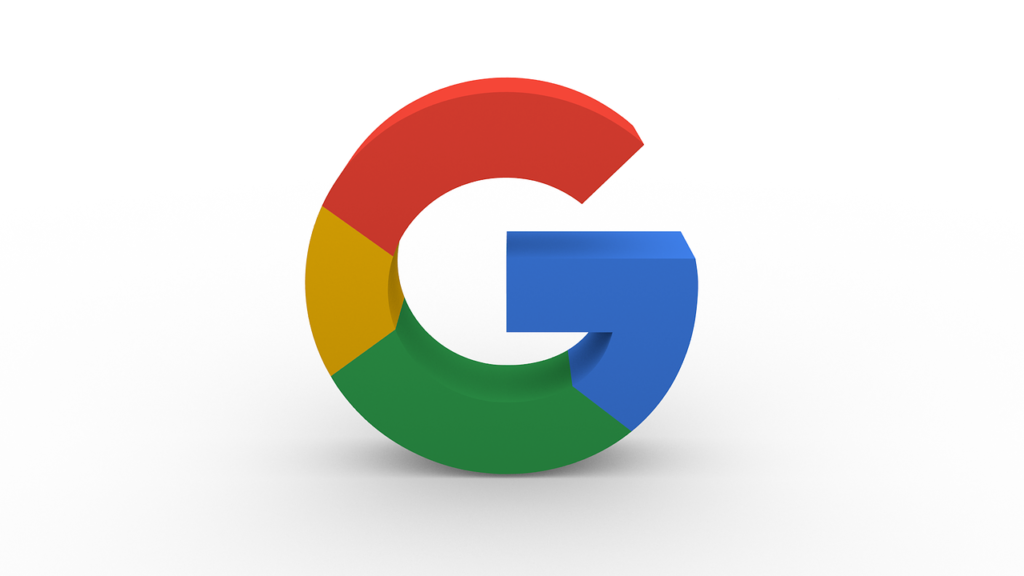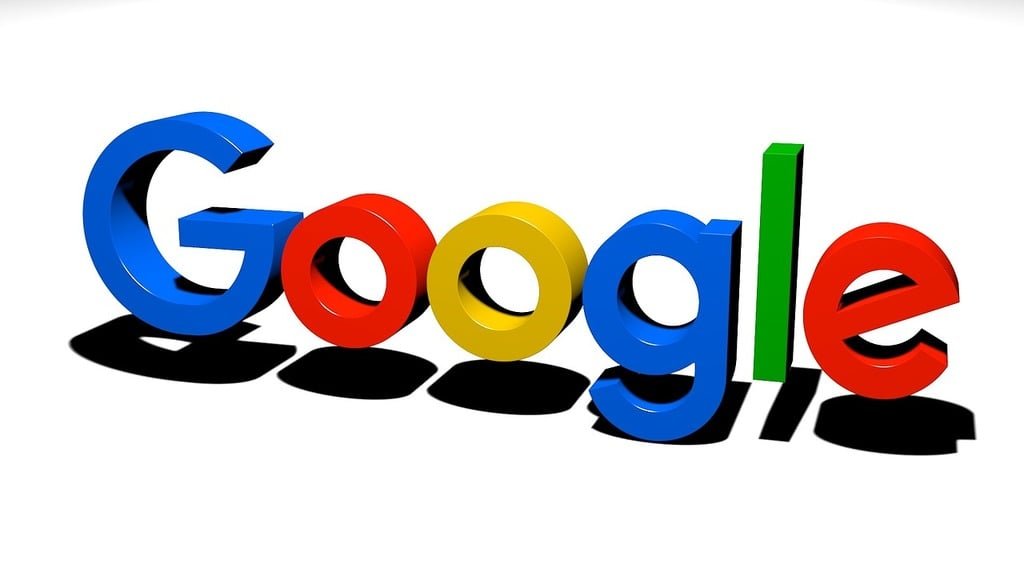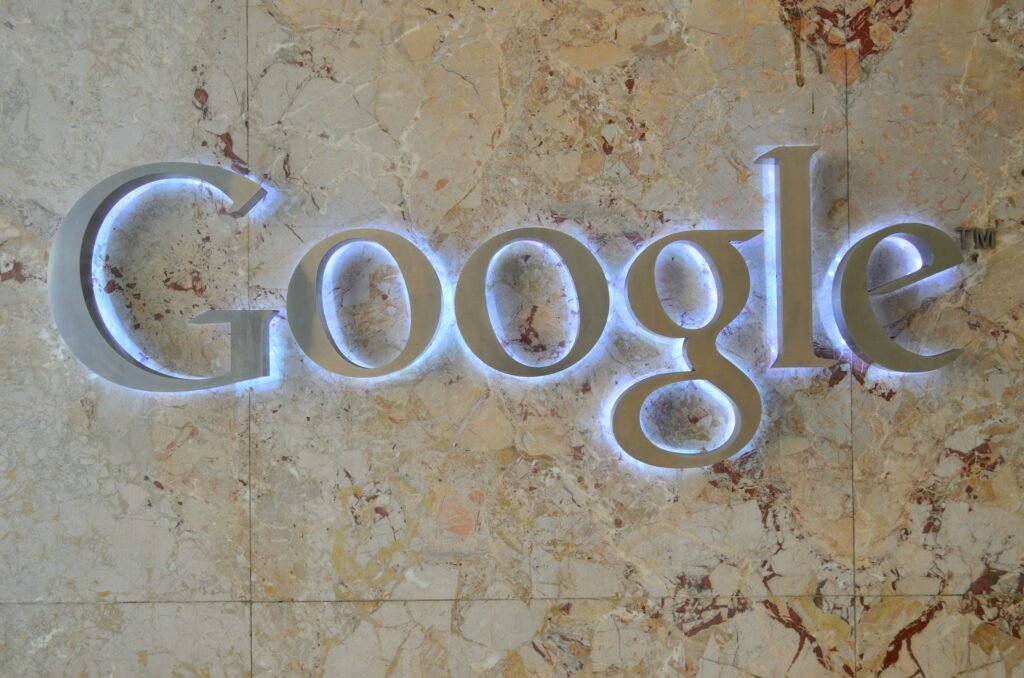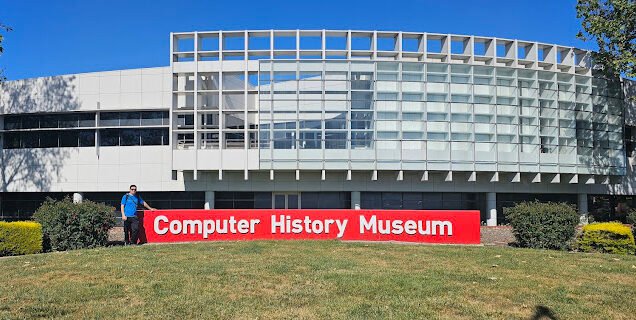In the annals of technological innovation, Google is a symbolic testament to human ingenuity, curiosity, and entrepreneurial spirit. The history of Google is an inspiring narrative that chronicles the meteoric rise of two brilliant minds, Larry Page and Sergey Brin, and their quest to revolutionize how we access and interact with information.
Two Stanford University graduate students, Larry Page and Sergey Brin embarked on this transformative journey in the late 1990s. In September 1998, they officially incorporated Google as a privately held company, setting up shop in a modest garage in Menlo Park, California. It was within this unassuming workspace that the seeds of the digital behemoth we know today were sown.
The essence of Google’s genesis can be distilled into a singular vision: to organize the vast and chaotic expanse of the internet. Page and Brin developed a groundbreaking algorithm known as PageRank, a system that assessed the relevance of web pages by analyzing their inbound links. This innovation improved search engine accuracy and laid the foundation for the company’s future success.
Google’s early days were marked by exponential growth, driven by its user-friendly interface and exact search results. The company’s commitment to delivering high-quality, relevant information quickly propelled it ahead of its competitors, solidifying its status as a household name.
Over the years, Google diversified its offerings, introducing services like Gmail, Google Maps, and Google Drive. The acquisition of YouTube in 2006 further extended its reach, making it a multimedia powerhouse. The company’s mission, encapsulated in its unofficial motto, “Don’t be evil,” underscored its commitment to ethical practices and user-centric innovation.
Today, Google has transcended its garage origins to become one of the world’s most influential tech giants, with a vast array of products and services that touch every aspect of our lives. Google’s history is a testament to the transformative power of innovation, entrepreneurship, and a relentless pursuit of knowledge. Join us on this journey as we delve deeper into Google’s fascinating history, unearthing the milestones, innovations, and cultural impact that define this remarkable company.
Table of Contents

What is Google, in simple words?
Google is like a super-smart librarian for the internet. Imagine you have a massive library with billions of books and want to find one specific book among them. Google helps you do that on the internet.
Here’s how it works: When you type something into Google’s search bar, like “funny cat videos,” Google quickly looks through its vast catalog of web pages to find the most likely to have what you’re looking for. It does this by using special computer programs called algorithms.
These algorithms consider the words you typed, how often those words appear on web pages, and how many other websites link to those pages. They also try to determine which pages are the most reliable and relevant. Then, Google gives you a list of websites that match your search, with the most relevant ones at the top.
Google doesn’t just search for text; it can also find images, videos, maps, and more. It’s like having a magical librarian who can find all sorts of information from all over the internet in just a fraction of a second.
In simple words, Google is a powerful search engine that helps you find information, websites, and all sorts of things on the Internet by typing in keywords. It’s like having a super-smart librarian at your service 24/7.
Who started Google first?
Google was founded in 1998 by Larry Page and Sergey Brin, two computer science graduate students at Stanford University. They started the company in a small garage in Menlo Park, California, to create a powerful and efficient search engine. Their initial project, “Backrub,” focused on analyzing backlinks to rank web pages. However, they soon realized the potential of their algorithm and rebranded their search engine as Google.
The name “Google” is a play on the word “googol,” which represents the number 1 followed by 100 zeros. This reflects Google’s mission to organize the vast amount of information available on the Internet.
Page and Brin were innovative thinkers who developed PageRank, an algorithm that revolutionized web search by considering the importance of backlinks in determining the relevance and authority of web pages. This breakthrough technology formed the foundation of Google’s success, as it delivered more accurate and useful search results than other search engines.
Through their dedication and vision, Larry Page and Sergey Brin transformed Google from a startup in a garage into one of the world’s most influential and successful technology companies. They changed the way people access information online and shaped the digital landscape we know today.
The History of Google: A Journey from a Garage to a Global Giant
The history of Google is a fascinating journey that begins in a Stanford University dorm room and evolves into one of the world’s most influential technology companies. Here is a detailed account of Google’s history:
Inception and Founding (1996-1998)
In September 1996, Larry Page and Sergey Brin, both Ph.D. students at Stanford University, embarked on a groundbreaking research project that would eventually give birth to Google. Their initial objective was to revolutionize internet search by creating a more efficient and effective search engine. Originally dubbed “Backrub,” this project introduced a novel approach to ranking web pages. Instead of relying solely on keyword frequency, Backrub analyzed the web’s complex network of backlinks to determine a webpage’s relevance and importance. This innovative method laid the foundation for Google’s future success in providing users with more accurate and valuable search results.
As the project evolved, Page and Brin recognized the need for a catchy and memorable name. In 1997, they registered the domain name “Google.com,” a clever play on the mathematical term “googol,” which represents the number 1 followed by 100 zeros. This choice of name reflected their ambitious goal to organize and make accessible the vast amount of information available on the internet. Little did they know that their research project would soon transform into one of the world’s most influential technology companies, fundamentally altering the way people access and interact with information online.
Initial Funding and Incorporation (1998)
Google’s first external funding, a $100,000 investment from Andy Bechtolsheim, marked a pivotal moment in the company’s history. This financial injection provided the necessary resources for Larry Page and Sergey Brin to move beyond their initial research project and take their innovative search engine to the next level.
Andy Bechtolsheim, one of the co-founders of Sun Microsystems, recognized the potential of Google’s technology early on. His investment provided crucial capital and a vote of confidence from an experienced tech entrepreneur. This enabled Page and Brin to solidify their ambitions and set the stage for Google’s rapid expansion.
On September 4, 1998, Google Inc. was formally incorporated in Menlo Park, California, marking the official beginning of Google as a company. From this point forward, Google’s trajectory was set, and it would revolutionize how people access information on the internet. The company’s dedication to innovation and its commitment to organizing the vast amount of online data laid the foundation for its eventual dominance in the tech industry, ultimately shaping the digital landscape we know today.

The Google Search Engine (Late 1990s)
Google’s search engine, introduced in 1998, revolutionized the way people accessed information on the internet. At the core of its success was PageRank, an ingenious algorithm developed by Google’s co-founders, Larry Page and Sergey Brin. PageRank analyzed the structure of the web by assessing the importance of webpages based on the number and quality of links pointing to them. This approach was a significant departure from the keyword-based search engines of the time, which often returned irrelevant or low-quality results.
What set Google apart was not just the algorithm but also its clean and minimalist homepage. While other search engines cluttered their pages with ads and unnecessary features, Google’s design was refreshingly simple. Users were greeted with a single search box, and the search results were delivered with astonishing speed and precision. This simplicity and efficiency resonated with users and made Google their go-to choice for web searches.
Google’s emphasis on delivering relevant and high-quality search results quickly propelled it to the top of the search engine industry. Over the years, Google’s search engine has continued to evolve, incorporating machine learning and artificial intelligence to provide even more accurate and personalized results. Today, it remains the dominant search engine globally, with billions of users relying on it daily to navigate the vast landscape of the internet.
Growth and Expansion (2000s)
Throughout the early 2000s, Google embarked on a remarkable journey of expansion and innovation, solidifying its position as a tech powerhouse. One of the pivotal moments during this period was Google’s strategic acquisitions, which broadened its portfolio and capabilities.
In 2000, Google acquired Deja News, a Usenet discussion service. This acquisition laid the foundation for Google Groups, an online discussion forum and Usenet archive that allowed users to explore and participate in discussions on various topics. Google’s foray into group discussions and archives marked a step toward enhancing its community and collaborative offerings.
Another significant acquisition was Applied Semantics in 2003, which improved Google’s ad targeting capabilities. Applied Semantics brought advanced technology for understanding the context and meaning of web content, which became integral to Google’s AdWords advertising platform. This acquisition helped Google deliver more relevant and targeted ads to users, revolutionizing online advertising.
In 2004, Google’s decision to go public with an Initial Public Offering (IPO) was a landmark moment. The IPO raised an impressive $1.67 billion, making it one of the largest tech IPOs in history. This infusion of capital allowed Google to fund further expansion, research and development, and strategic acquisitions, cementing its position as a dominant force in the tech industry.
These early 2000s developments showcased Google’s commitment to innovation, diversification, and its vision of making the Internet more accessible and useful to people worldwide. They set the stage for the company’s continued growth and evolution in the years to come.
Google’s Dominance (Mid-2000s)
During the early 2000s, Google’s ascent to dominance in the search market was nothing short of meteoric. Its search engine set a new standard for accuracy and relevance, revolutionizing how people accessed information online. This rise in popularity was partly due to its innovative PageRank algorithm, which evaluated webpages based on their link structure, making search results more meaningful.
As Google solidified its position as the go-to search engine, it didn’t rest on its laurels. The company embarked on a relentless journey of innovation and diversification. In 2005, Google introduced Google Maps, forever changing the way people navigated the world. It quickly became an indispensable tool for commuters and travelers alike.
In 2004, Google shook up the email landscape with the launch of Gmail. Offering generous storage space, powerful search capabilities, and a user-friendly interface, Gmail soon became dominant in the email market, challenging established players like Yahoo Mail and Hotmail.
Google News, introduced in 2002, was another groundbreaking product. It aggregated news articles from various sources, allowing users to access diverse perspectives on current events.
These new products showcased Google’s commitment to innovation and its vision of making information accessible and useful. They also laid the foundation for Google’s expansion beyond search into a wide range of digital services and technologies that continue to shape how we live, work, and interact in the digital age.

Android Acquisition (2005)
In 2005, Google made a strategic move by acquiring Android Inc., a small startup with a vision of creating an open-source mobile operating system. This acquisition would prove to be a pivotal moment in the history of mobile technology and lay the foundation for what would eventually become the world’s most widely used mobile operating system, Android.
At the time of the acquisition, the smartphone landscape was dominated by proprietary operating systems like BlackBerry and Windows Mobile. Google saw the potential for a more open and flexible platform that could empower developers and manufacturers to create innovative mobile devices. Under Google’s guidance, Android evolved into a versatile, customizable, and developer-friendly operating system.
The first Android-powered smartphone, the HTC Dream (the T-Mobile G1), was launched in 2008. It introduced features like the Android Market (now Google Play Store), a touchscreen interface, and the integration of Google services like Gmail and Google Maps. Android’s open-source nature encouraged a vast ecosystem of app developers and device manufacturers, rapidly expanding the variety of Android devices and the number of apps available.
Over the years, Android’s market share grew exponentially, surpassing competitors like iOS, and it became the backbone of countless smartphones and tablets from various manufacturers worldwide. Its adaptability also led to its use in other devices, such as smart TVs, wearable technology, and automotive infotainment systems. Android’s success exemplifies how Google’s strategic acquisition in 2005 transformed the mobile industry, making Android an integral part of our daily lives.

Expansion Beyond Search (2006-2010)
In the late 2000s and early 2010s, Google made significant strides in expanding its reach and diversifying its product portfolio. One of the pivotal moves during this period was the introduction of Google Chrome, a web browser that quickly gained popularity for its speed, simplicity, and emphasis on web standards. Chrome’s success led to a transformation in the web browsing landscape, as it emerged as a significant competitor to Microsoft’s Internet Explorer and Mozilla’s Firefox.
Additionally, Google ventured into online document processing with the launch of Google Docs. This cloud-based suite of productivity tools allowed users to create, edit, and collaborate on documents, spreadsheets, and presentations in real time, challenging Microsoft Office’s dominance.
Simultaneously, Google aimed to reshape the operating system landscape by introducing Google Chrome OS, a lightweight and web-centric operating system designed primarily for netbooks and Chromebooks. This move represented a departure from traditional desktop computing, emphasizing cloud-based applications and services.
In 2010, Google entered the highly competitive smartphone market with the release of the Nexus One, an Android-powered device. This marked Google’s foray into hardware, showcasing its commitment to the Android ecosystem. The Nexus One served as a reference device for Android and set the stage for Google’s future endeavors in the mobile device space.
These strategic expansions underscored Google’s ambition to extend its influence beyond search and advertising, positioning the company as a major player in web browsing, productivity software, and mobile technology.
Challenges and Controversies (2010s)
As Google continued its meteoric rise to dominance in the tech industry, it encountered a slew of legal and regulatory challenges related to antitrust, privacy, and censorship concerns. One of the most prominent issues was the accusation of anticompetitive behavior in search results. Google was accused of unfairly promoting its own products and services at the expense of competitors, which raised concerns about stifling competition and innovation.
Various regulatory bodies in the United States, Europe, and other regions launched antitrust investigations. These investigations focused on whether Google’s search algorithms and practices gave it an unfair advantage in the marketplace. Ultimately, Google faced hefty fines from regulatory bodies, including a multibillion-dollar fine from the European Union.
Privacy concerns also haunted Google as it collected vast amounts of user data through its services, such as Gmail and Android. Accusations of insufficient transparency and user consent led to regulatory scrutiny and calls for stricter data protection regulations.
Censorship issues arose in the context of Google’s operations in countries with strict censorship policies, notably China. Due to censorship concerns, Google’s decision to withdraw its search engine from China in 2010 was a significant ethical and operational dilemma.
These challenges underscored the complex and multifaceted landscape in which Google operated as it juggled the demands of users, advertisers, regulators, and its business interests. Despite these obstacles, Google remained a dominant force in the tech industry, continually adapting to evolving regulatory environments and public expectations regarding competition, privacy, and freedom of information.
Alphabet Inc. Restructuring (2015)
In August 2015, Google executed a momentous corporate restructuring that fundamentally transformed its organizational structure. This pivotal move involved the creation of Alphabet Inc., a newly established holding company. The primary objective behind this restructuring was to allow Google to maintain its focus on its core internet-related businesses, particularly its search engine and advertising ventures, while enabling other Alphabet subsidiaries to explore a wide range of innovative and diverse projects.
Under this new structure, Google became just one of several operating companies under Alphabet’s umbrella, alongside companies such as Waymo (focused on autonomous vehicles), Verily (biotech and life sciences), and DeepMind (artificial intelligence research), among others. By segregating these businesses into distinct entities, Alphabet aimed to provide more autonomy and independence to each subsidiary, fostering a culture of innovation and risk-taking.
The Alphabet restructuring also provided greater transparency into the financial performance of various business segments and allowed investors to better evaluate each subsidiary’s performance. This strategic realignment demonstrated Google’s commitment to long-term growth and innovation, paving the way for continued expansion and diversification beyond its core internet search and advertising businesses.

AI and Machine Learning (2010s)
Google’s significant investments in artificial intelligence (AI) and machine learning have propelled the company to the forefront of innovation in various domains. One notable area where Google’s AI prowess has profoundly impacted is natural language processing (NLP). Google Assistant, the company’s virtual voice-activated assistant, is a prime example of AI-driven NLP. It can understand and respond to spoken language, making it a valuable tool for tasks ranging from answering questions and setting reminders to controlling smart home devices. Google’s advancements in NLP have improved voice recognition accuracy and made conversations with AI more natural and context-aware—another domain where Google has made remarkable strides in autonomous vehicles through its subsidiary, Waymo. Waymo’s autonomous driving technology relies heavily on AI and machine learning algorithms to navigate roads safely and efficiently. Google’s AI systems can process vast amounts of sensor data from cameras, lidar, and radar to make real-time decisions, ensuring the safety of passengers and other road users. This pioneering work in autonomous vehicles has the potential to revolutionize transportation, making it safer and more accessible while reducing the environmental impact.
Google’s substantial investments in AI and machine learning have yielded groundbreaking advancements in natural language processing through Google Assistant and the development of autonomous vehicles through Waymo. These innovations demonstrate Google’s commitment to pushing the boundaries of technology and promise to transform how we interact with machines and move from one place to another in the future.
Google Cloud and Diversification (2010s)
In the 2010s, Google underwent a significant expansion beyond its core search and advertising business. Recognizing the growing importance of cloud computing, Google made a strategic move into this domain with Google Cloud Platform (GCP). GCP offered a range of cloud-based services, including computing power, storage, and data analytics, putting Google in direct competition with industry leaders like Amazon Web Services (AWS) and Microsoft Azure. Google’s expertise in data processing and machine learning played a crucial role in positioning GCP as a formidable player in the cloud computing market.
Simultaneously, Google made forays into hardware to diversify its product portfolio. The company introduced the Pixel smartphone, aiming to showcase hardware and software integration, much like Apple. The acquisition of Nest Labs enabled Google’s entry into the smart home market, offering products like Nest thermostats and cameras. Additionally, Google Home, a line of smart speakers and smart displays, showcased Google’s ambitions in the burgeoning intelligent assistant and Internet of Things (IoT) markets. This strategic diversification demonstrated Google’s commitment to staying at the forefront of technology by expanding into key areas that align with the evolving digital landscape.

Recent Developments (2020s)
In the 2020s, Google maintained its commitment to innovation and expansion in key areas, notably artificial intelligence (AI), cloud computing, and sustainability initiatives. The company leveraged AI and machine learning to enhance its services, from improving search results and voice assistants to advancing autonomous driving technology through its subsidiary, Waymo.
In cloud computing, Google Cloud Platform (GCP) competed aggressively with other industry leaders, offering businesses a robust suite of services for data storage, processing, and analysis. Google’s extensive data center infrastructure and AI capabilities positioned it as a formidable player in the cloud market.
Sustainability became a top priority for Google, announcing ambitious plans to operate on 100% renewable energy and achieve carbon neutrality for all its operations. Investments in clean energy and eco-friendly data centers demonstrated Google’s commitment to reducing its environmental footprint.
However, Google also grappled with persistent regulatory challenges and controversies. Concerns over data privacy and antitrust issues led to various investigations and legal actions. The company faced scrutiny over its data collection practices, advertising dominance, and alleged anti-competitive behavior, prompting calls for increased regulation and oversight.
Despite these challenges, Google remained a driving force in the tech industry, shaping the future of AI, cloud computing, and sustainability while navigating the complex landscape of regulatory compliance and public scrutiny.
Google’s history exemplifies the profound impact of Larry Page and Sergey Brin’s vision. What began as a research project in a Stanford University dorm room ultimately revolutionized how we access and interact with information. Their commitment to creating a search engine that organized the vast expanse of the internet has not only succeeded but also propelled Google into a technology giant.
Over the years, Google diversified its offerings, expanding beyond its search engine roots. It introduced innovative products like Gmail, Google Maps, and Android, fundamentally reshaping communication, navigation, and mobile technology. The company’s relentless pursuit of innovation led to advancements in artificial intelligence and cloud computing, further influencing industries ranging from voice assistants to autonomous vehicles.
Despite challenges and controversies, Google’s commitment to making information universally accessible and helpful remains unwavering. As of my last update in September 2021, Google continues to shape our digital lives, and its ongoing developments continue to shape the tech landscape. For the latest information, please refer to up-to-date sources.











